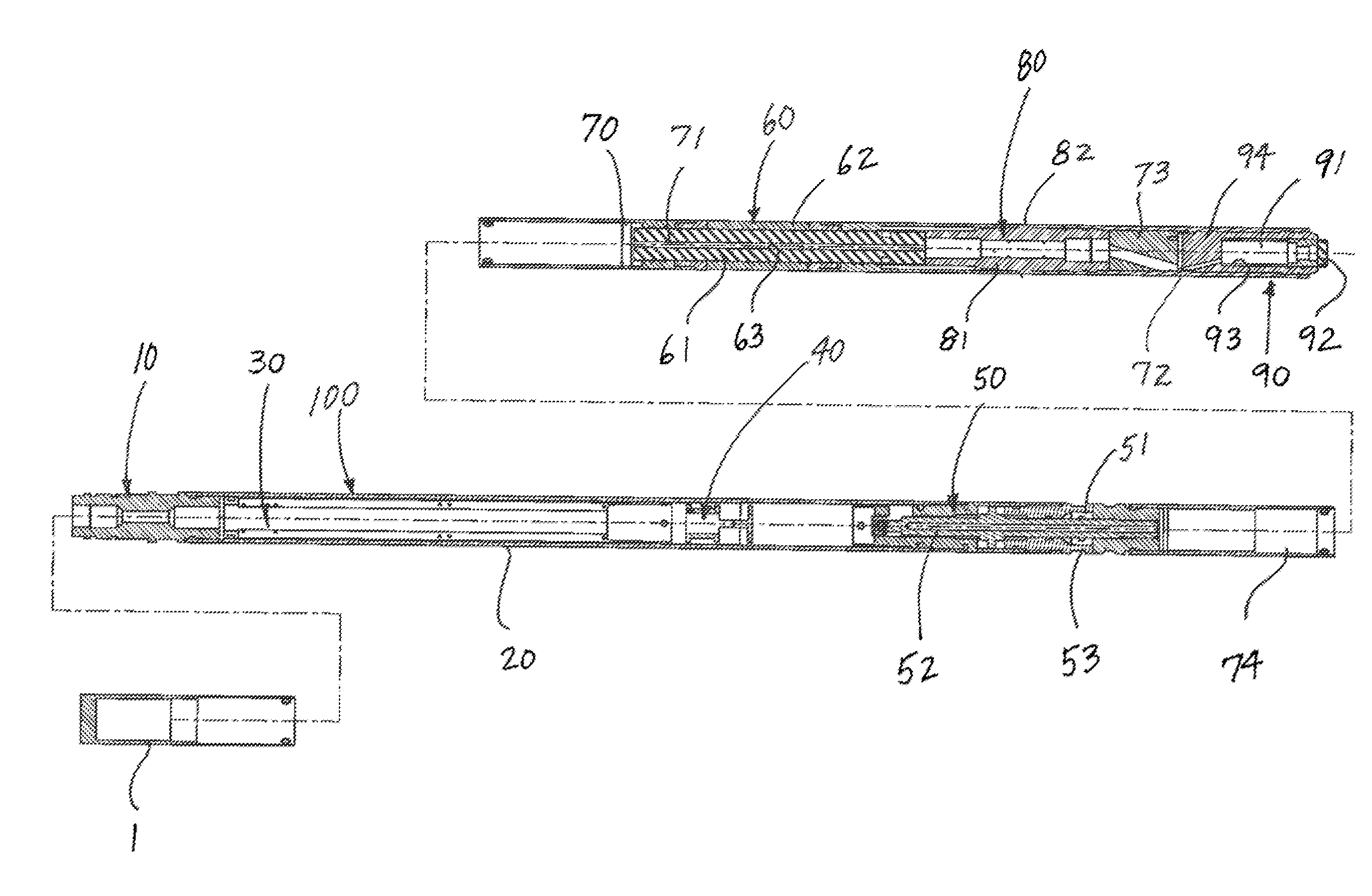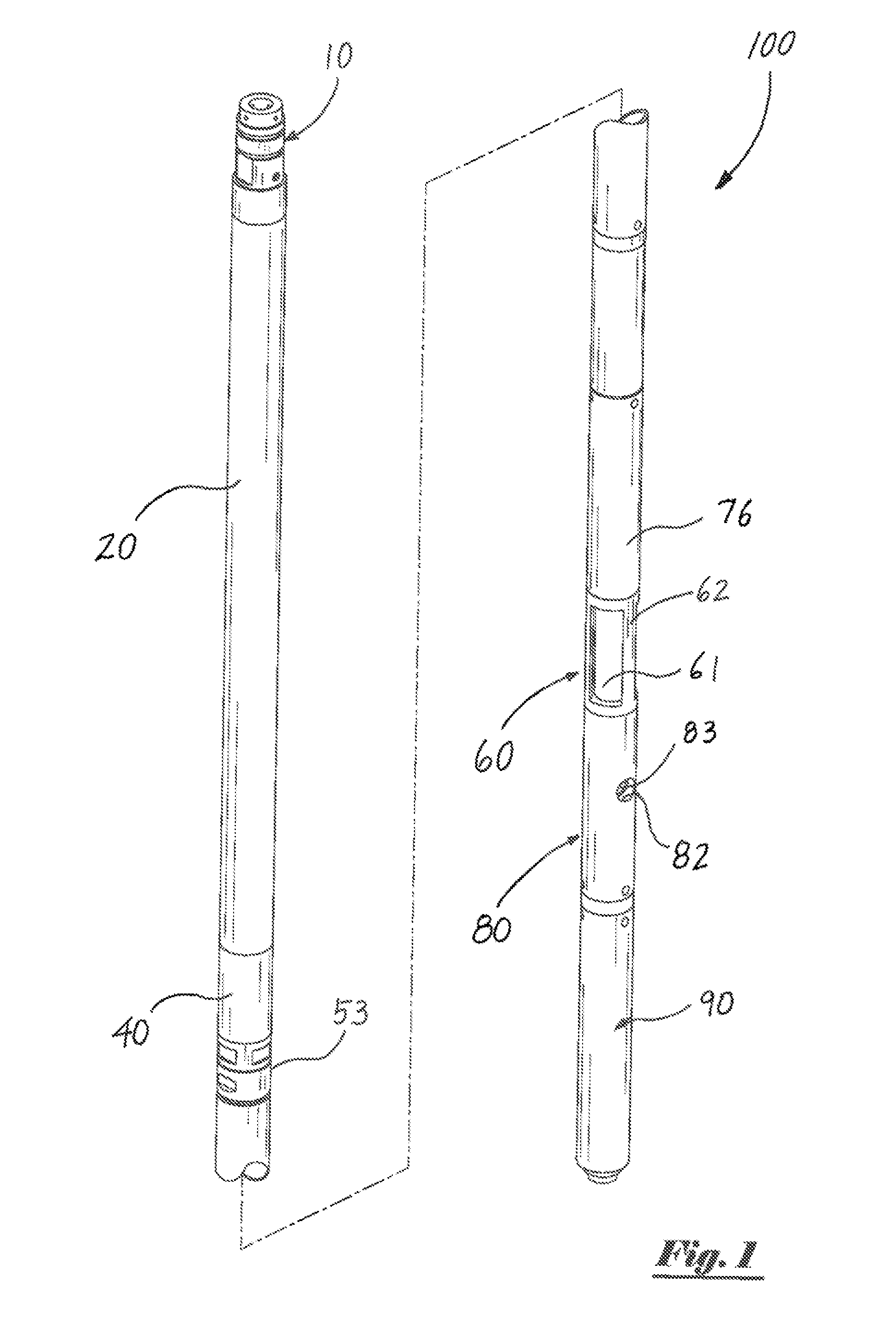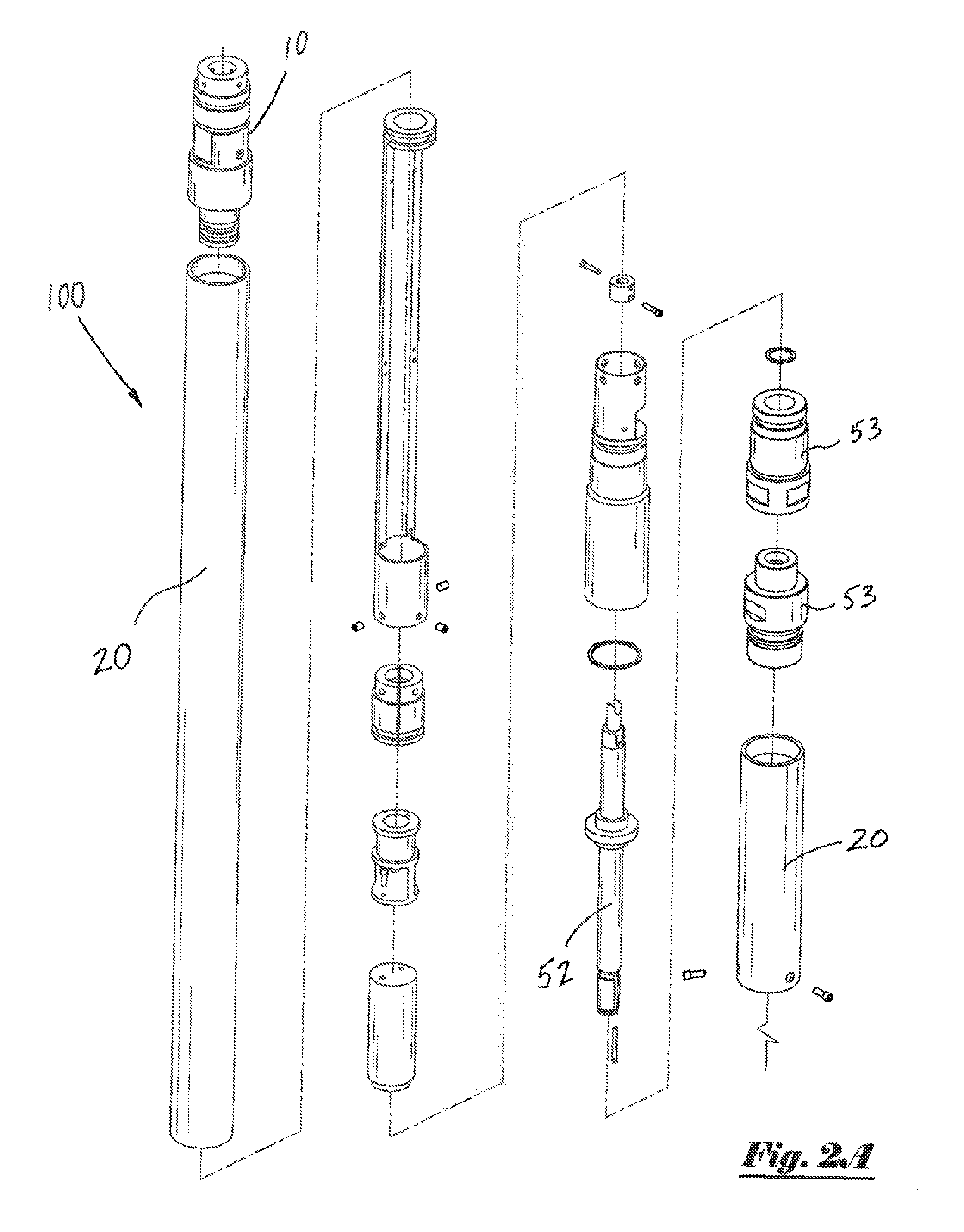Side view downhole camera and lighting apparatus and method
a technology of lighting apparatus and camera, which is applied in the field of side view downhole camera and associated lighting system, can solve the problems of increasing the problems of existing light source system, all conventional means for downhole illumination suffer from a number of significant limitations, and the wellbores contain little or no existing source of ambient or available light, so as to strengthen the overall stability of the camera assembly, protect the camera from scarring, and significantly illuminate the
- Summary
- Abstract
- Description
- Claims
- Application Information
AI Technical Summary
Benefits of technology
Problems solved by technology
Method used
Image
Examples
Embodiment Construction
[0020]The application on which this application claims priority under 35 USC 119(e), U.S. Provisional Patent Application No. 61 / 906,457, filed Nov. 20, 2013, is hereby incorporated herein by reference. The present invention comprises a method and apparatus for beneficially illuminating a portion of a downhole wellbore environment. Live video data or other visual images can be acquired within said wellbore, and recorded to onboard data storage and / or transmitted to the earth's surface for viewing, evaluation and / or other purposes. In addition to downward views (that is, views that are substantially aligned with the longitudinal axis of a wellbore and oriented generally toward the distal end of said wellbore), the present invention permits viewing of subject matter that is positioned laterally to said apparatus—that is, subject matter that is positioned substantially perpendicular to the longitudinal axis of said wellbore.
[0021]FIG. 1 depicts a side perspective view of a downhole side...
PUM
 Login to View More
Login to View More Abstract
Description
Claims
Application Information
 Login to View More
Login to View More - R&D
- Intellectual Property
- Life Sciences
- Materials
- Tech Scout
- Unparalleled Data Quality
- Higher Quality Content
- 60% Fewer Hallucinations
Browse by: Latest US Patents, China's latest patents, Technical Efficacy Thesaurus, Application Domain, Technology Topic, Popular Technical Reports.
© 2025 PatSnap. All rights reserved.Legal|Privacy policy|Modern Slavery Act Transparency Statement|Sitemap|About US| Contact US: help@patsnap.com



